Bayraktar Drone CFD Simulation, ANSYS Fluent Training
$100.00 $50.00 Student Discount
- The problem numerically simulates a Skywalker X8 UAV using ANSYS Fluent software.
- We design the 3-D model with the Design Modeler software.
- We mesh the model with Fluent Meshing software. The element number equals 1,199,753 and their type is polyhedra.
- Multiple Reference Frames (Frame Motion) are used to model the rotational motion of the propeller.
To Order Your Project or benefit from a CFD consultation, contact our experts via email (info@mr-cfd.com), online support tab, or WhatsApp at +44 7443 197273.
There are some Free Products to check our service quality.
If you want the training video in another language instead of English, ask it via info@mr-cfd.com after you buy the product.
Description
Bayraktar UAV Aerodynamic CFD Simulation, ANSYS Fluent Training
Introduction
An unmanned aerial vehicle from Turkey is called the Bayraktar. It is a long-lasting, medium-altitude drone. It can be used for surveillance and reconnaissance.
It has a top speed of more than 220 kilometers per hour. The drone has a fuel capacity of 300 liters. The range can go up to 300 km. 5.48 kilometers is the operational altitude. The greatest height is 7.62 kilometers Maximum loitering time for this drone is 27 hours.
In this simulation, a Bayraktar UAV with one propeller rotating around the horizontal axis is modeled using ANSYS Fluent software. The device is moving at a speed of 140 km/h.
The geometry of the present model is three-dimensional and has been designed using Design Modeler software. We do the meshing of the present model with Fluent Meshing software. The mesh type is Polyhedra, and the element number is 1,199,753.
Methodology: Bayraktar UAV CFD Simulation
The Multiple Reference Frames (MRF) method is used to model the rotational motion of the propeller.
Conclusion
Following the completion of the simulation process, vectors and contours for variables like pressure, velocity and turbulent intensity were acquired. The vortexes behind the propeller are visible, as evidenced by the velocity contours. Good dynamic stability is obtained as a result of the Reverse V- tale opposition to the vortexes.
In the static pressure parameter case, as it was predictable, the UAV’s front surfaces endure the highest pressure. The maximum static pressure is applied to the propellers’ edges, which tells us about the necessity of the manufacturing focus on this component.
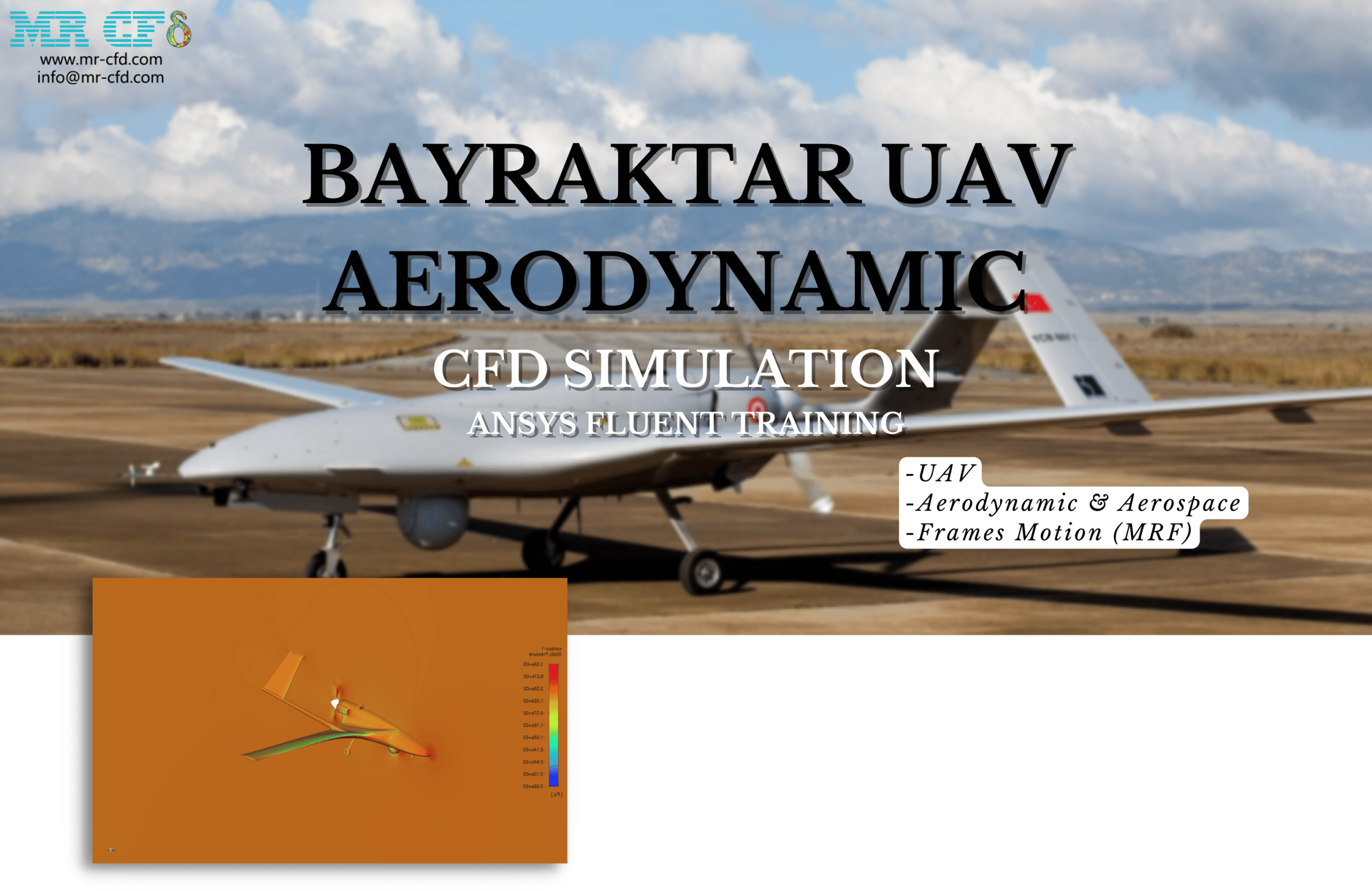
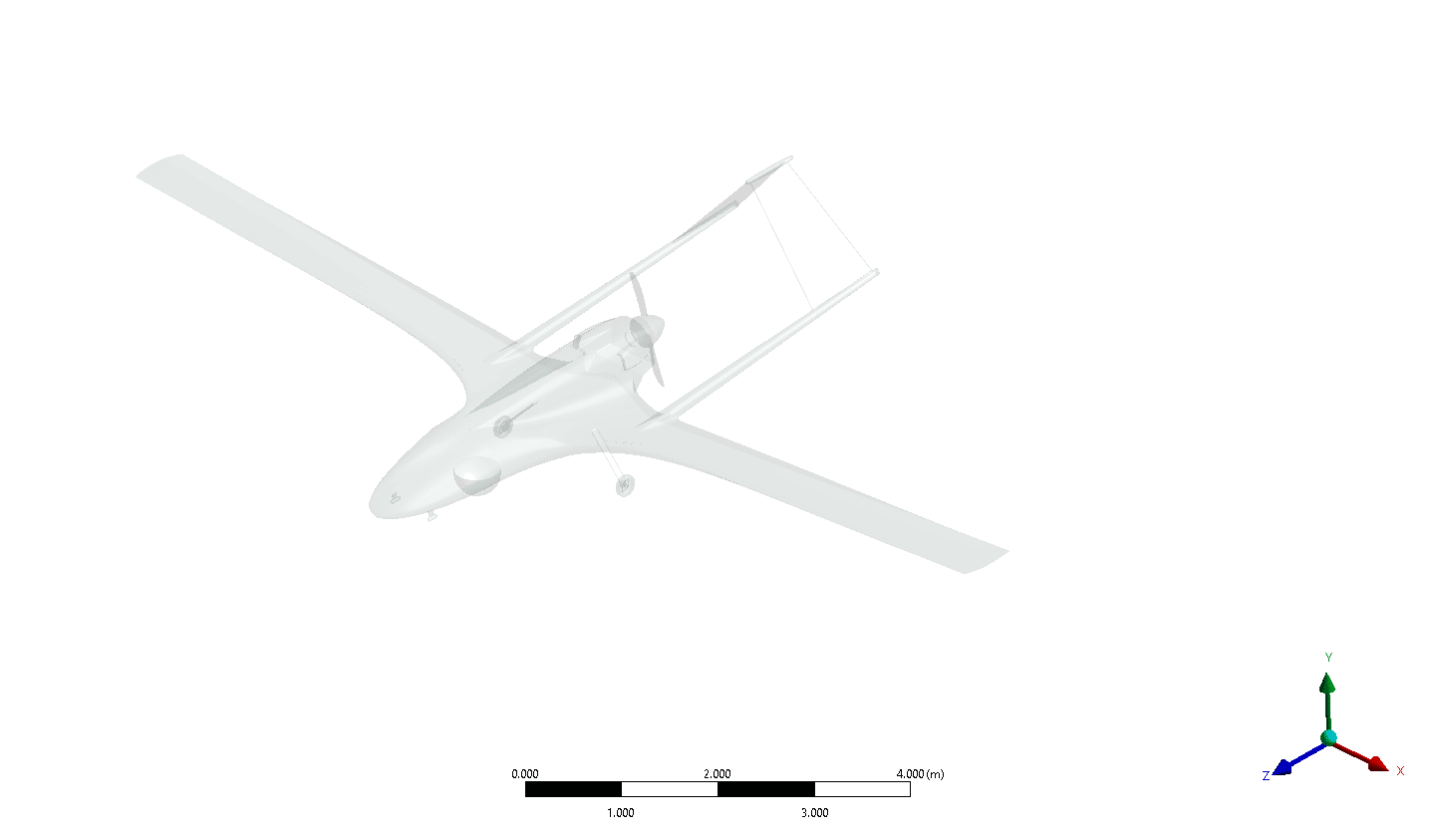

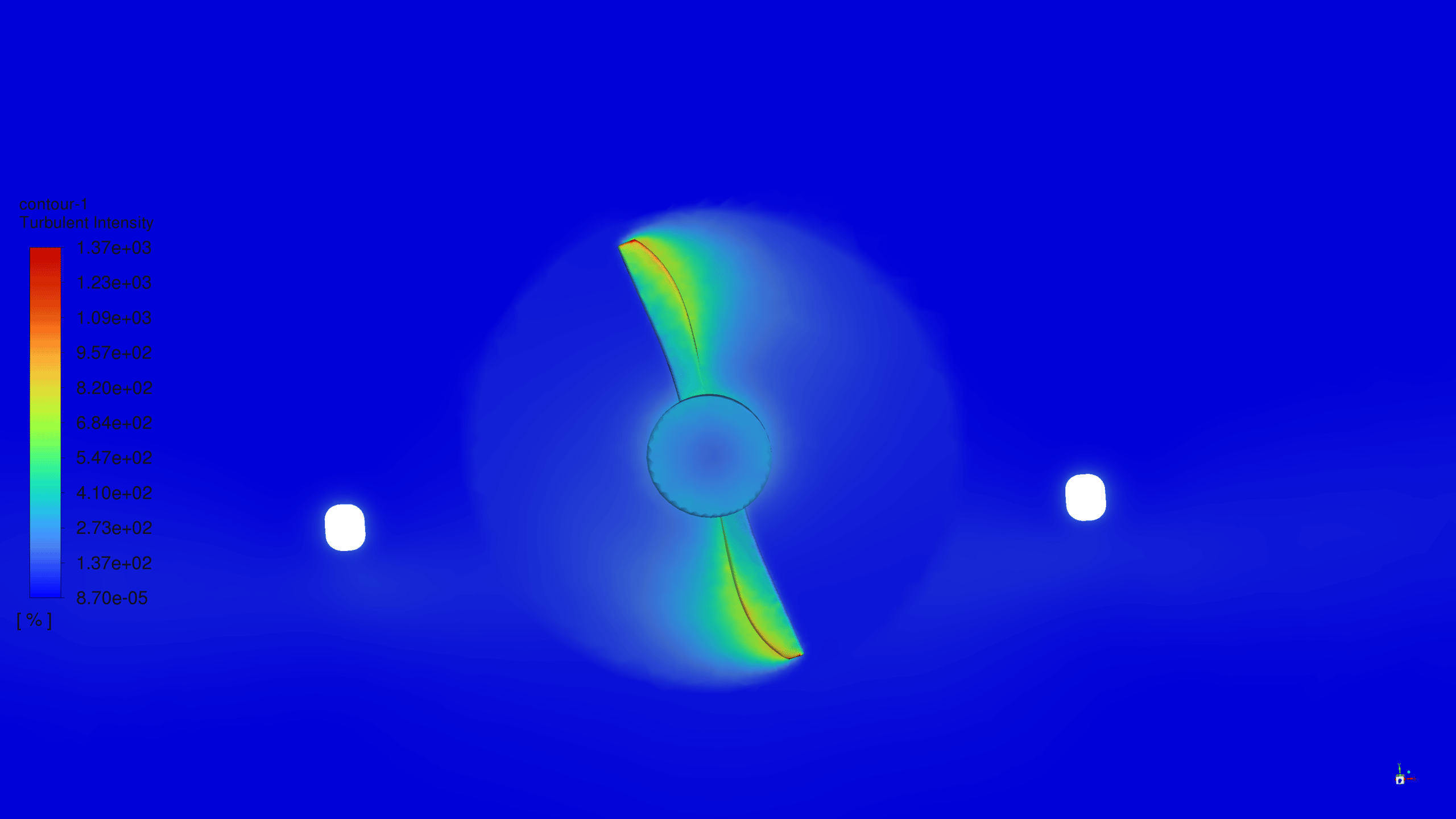
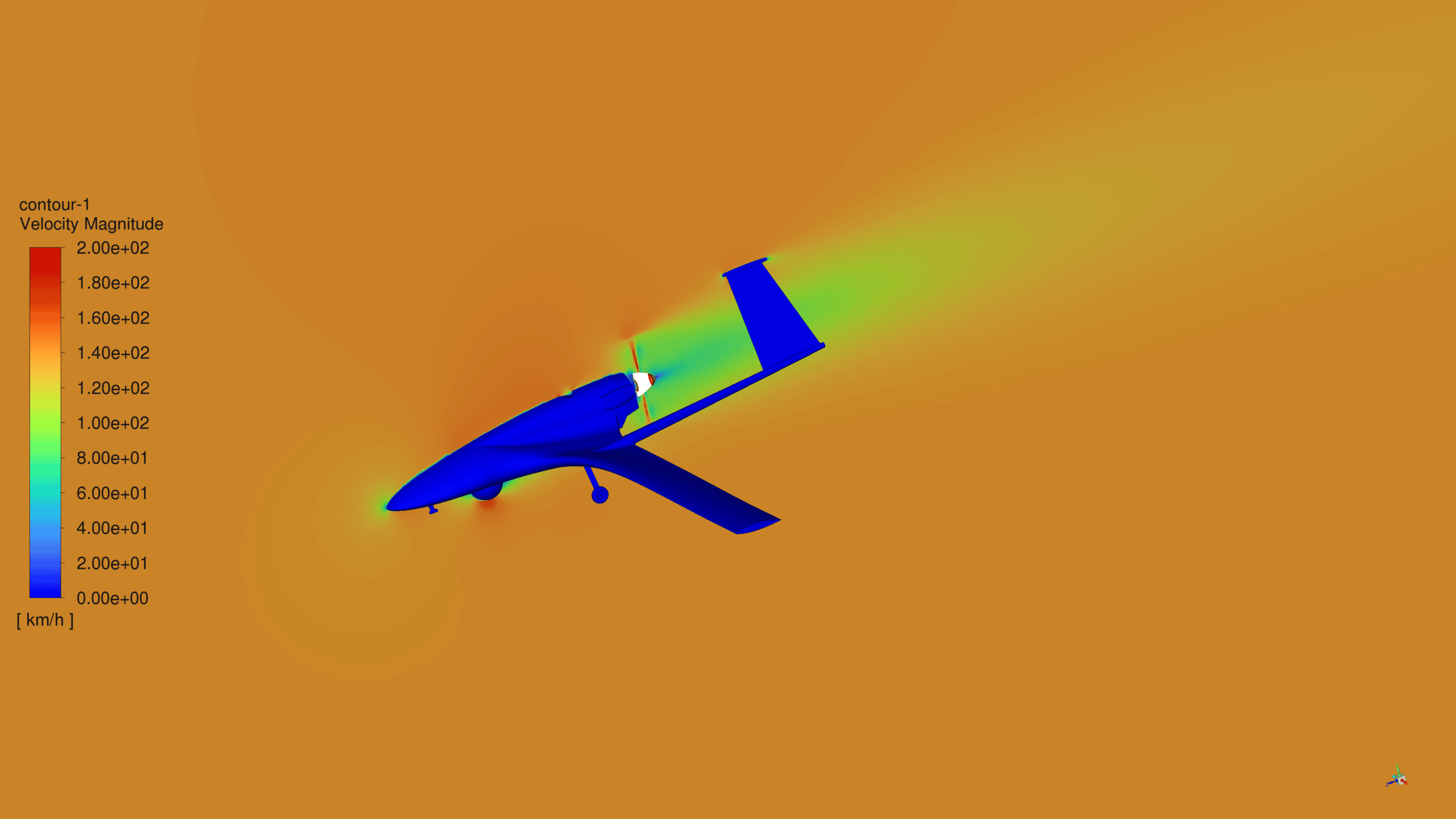
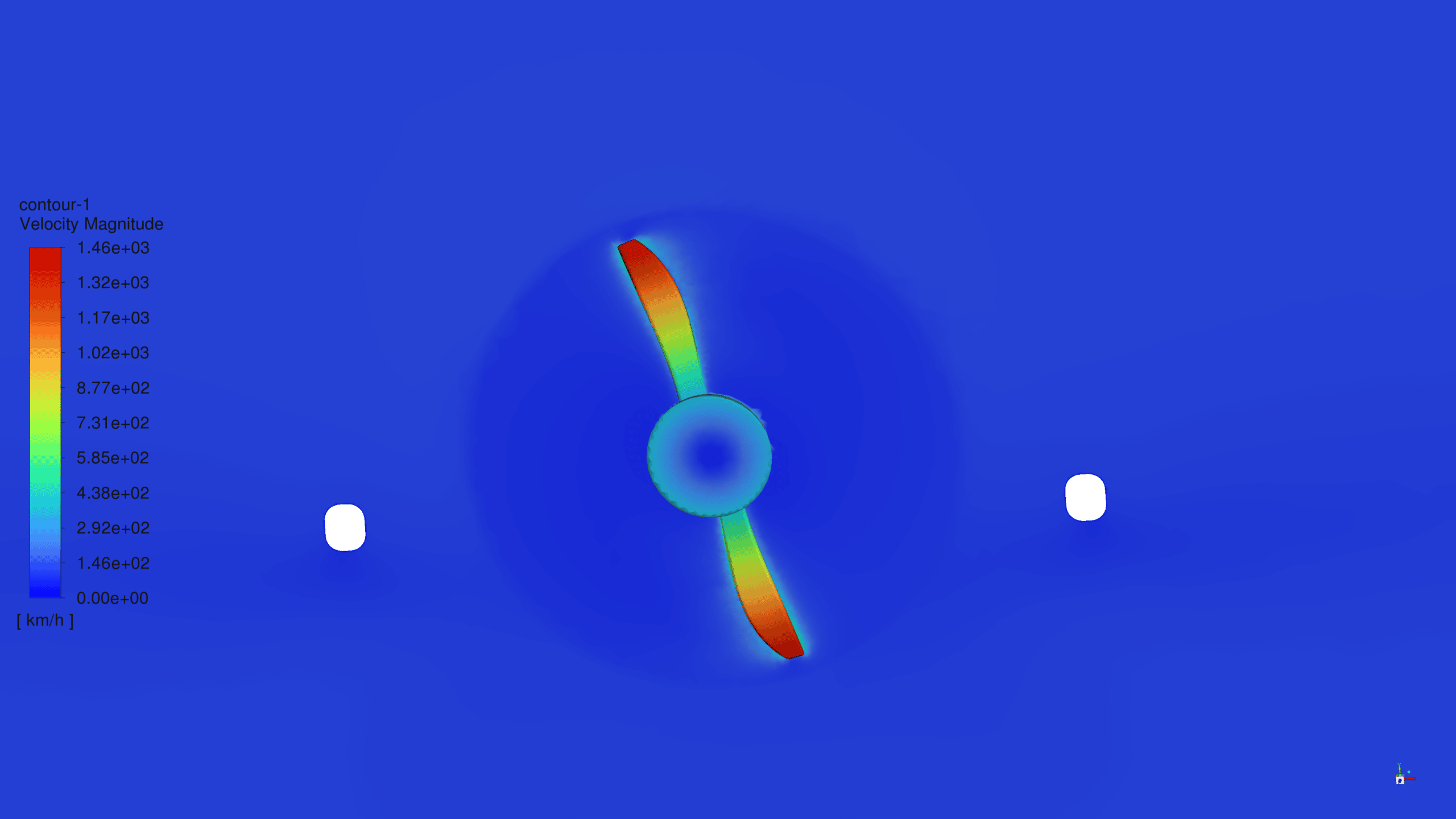
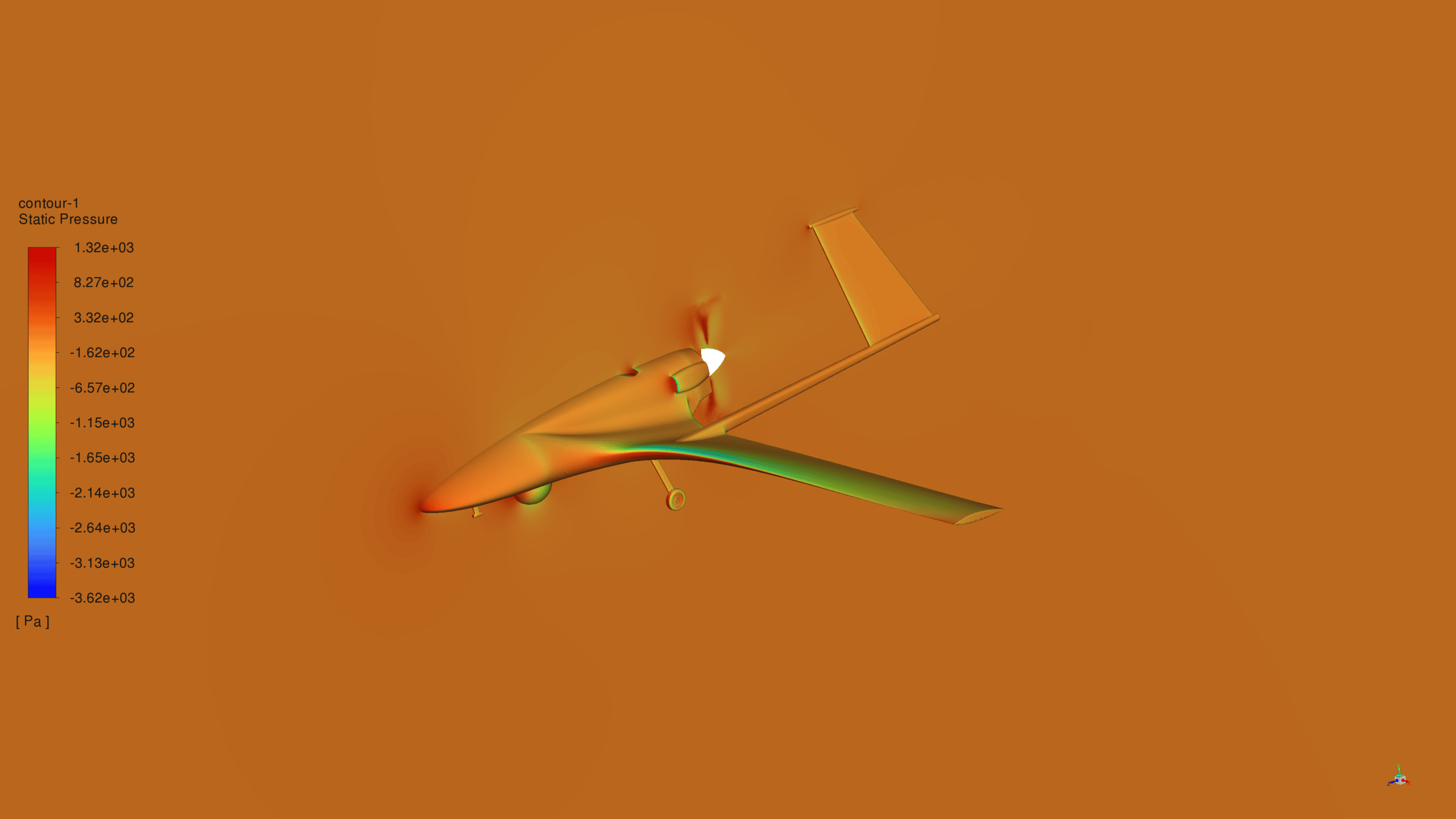


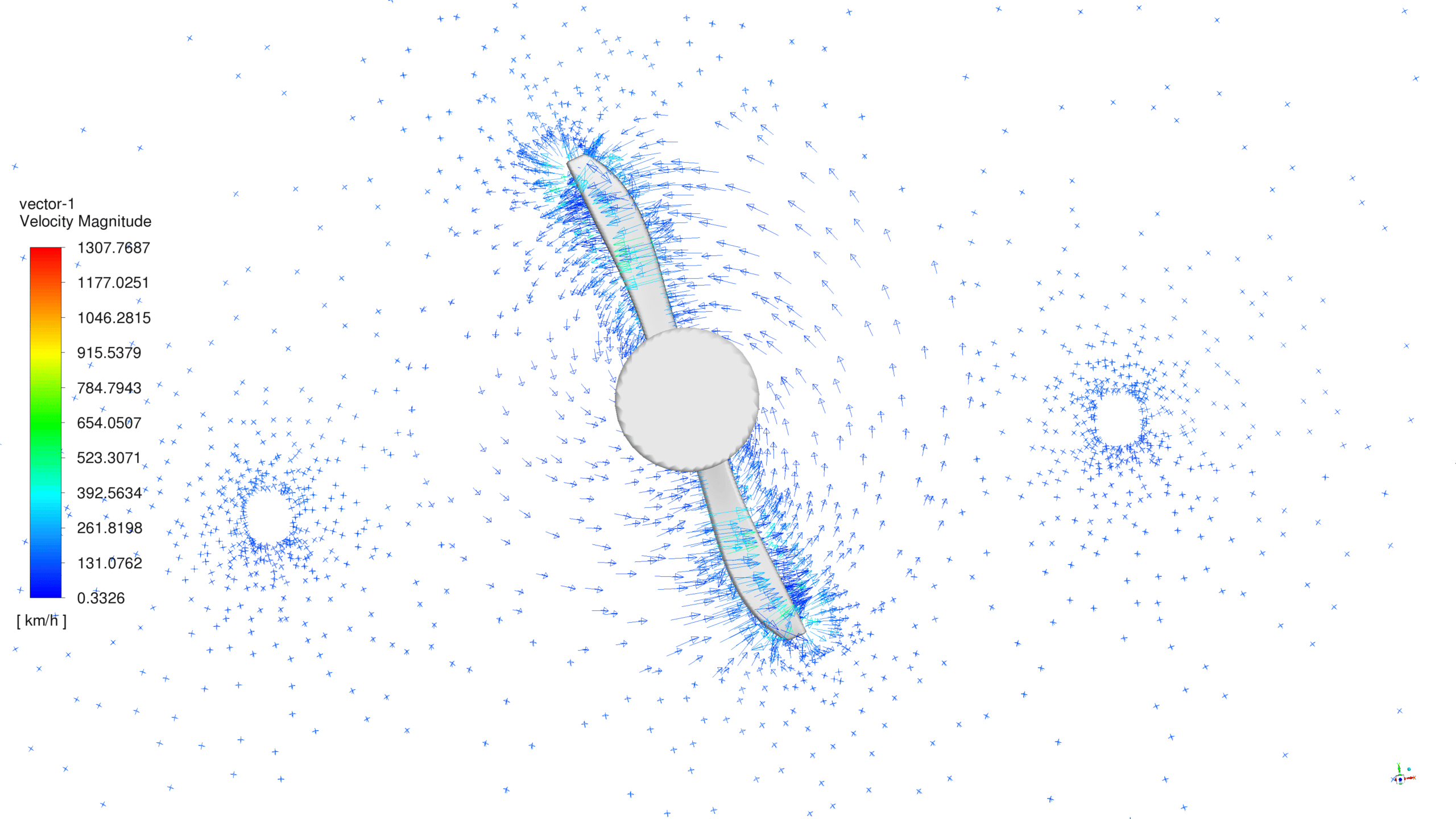
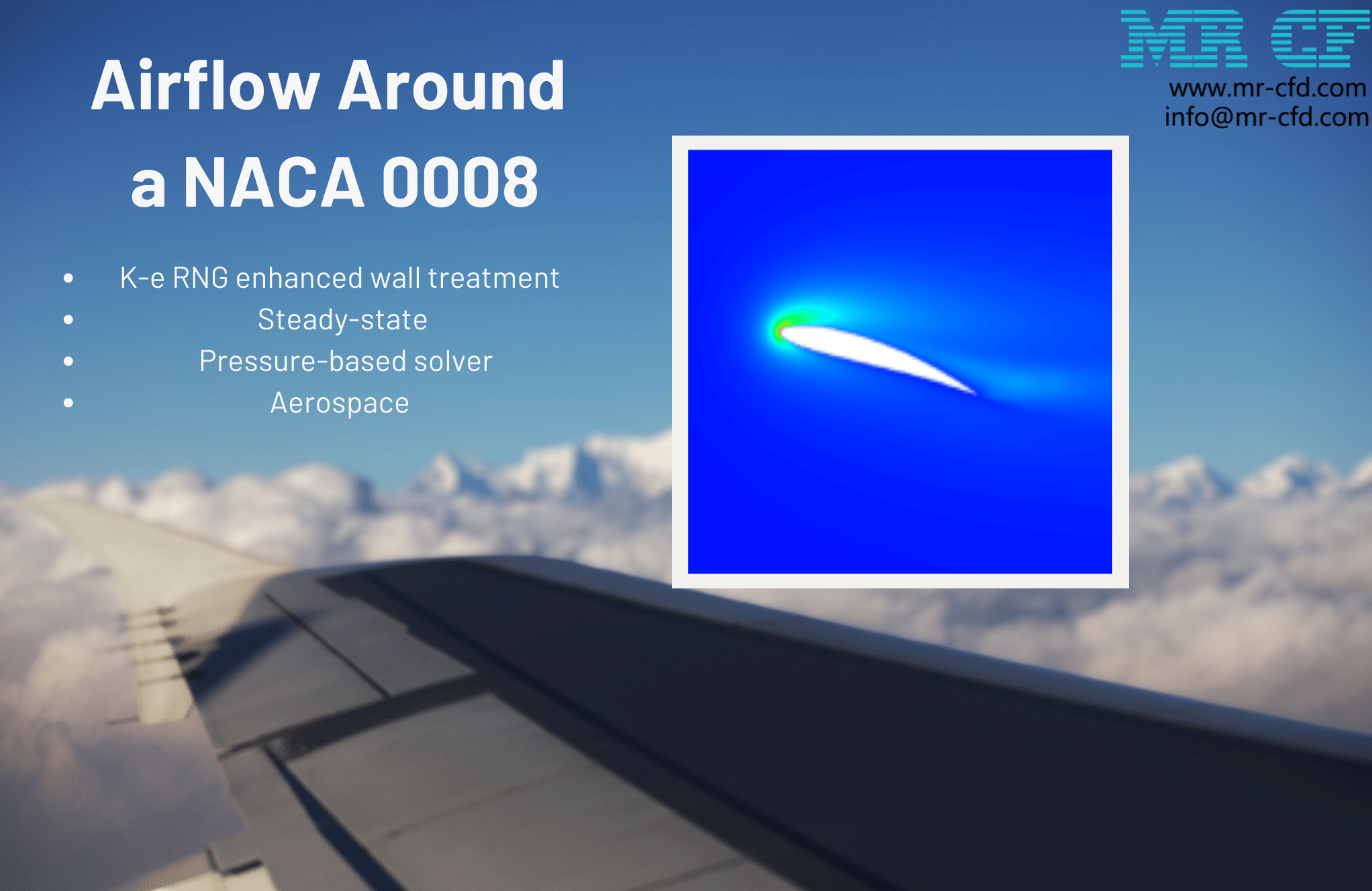
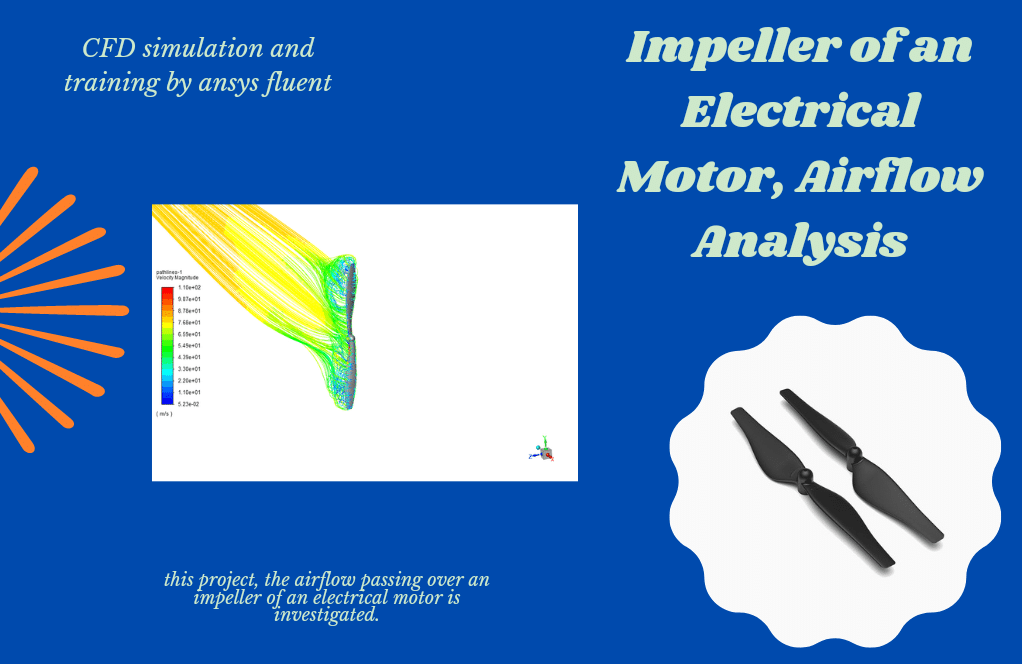
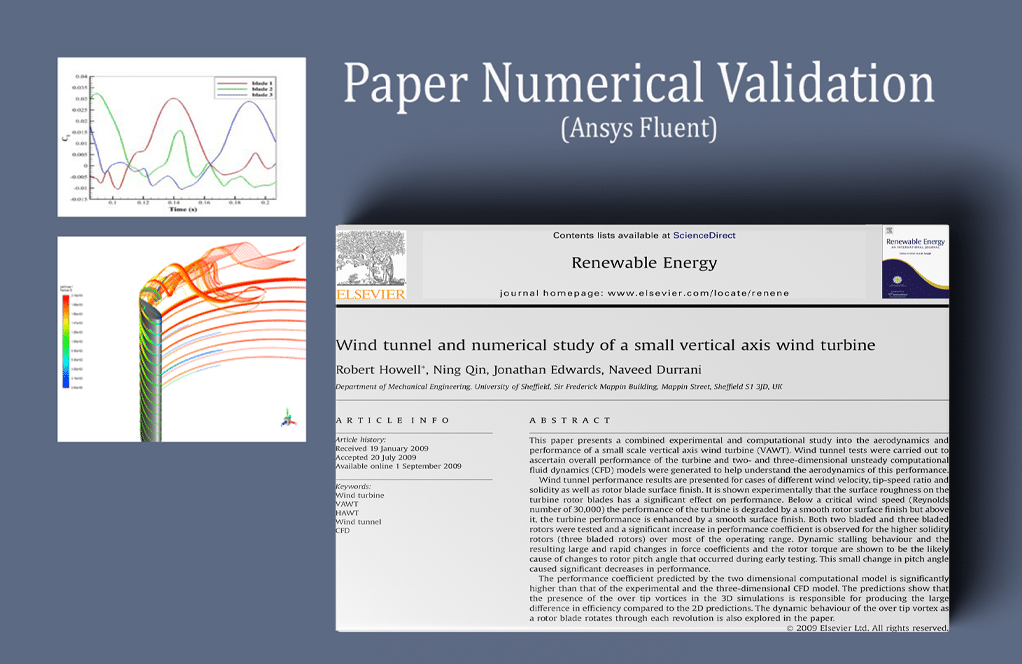

Kitty Langworth –
The training course helped me grasp the concept of UAV simulation effectively. The utilization of the MRF method for the propeller’s rotation was particularly insightful, and the results provided clear indications of the areas of highest pressure. Truly impressed by the dynamic stability illustrated through the sim!
MR CFD Support –
Thank you for the positive feedback on the Bayraktar Drone CFD simulation training! We’re delighted to know that the course was effective in helping you understand UAV simulation and that the use of the MRF method added value to your learning experience. Your recognition of the results and simulation details is greatly appreciated.
Miss Magdalen Armstrong –
I was fascinated by the Reverse V-tale’s role in dynamic stability. Can you explain how it counters the propeller-induced vortices to maintain stability?
MR CFD Support –
The Reverse V-tale on the Bayraktar drone acts as a stabilizing surface which helps counteract the effects of the vortices created by the propeller. When the propeller rotates, it induces a swirling flow that can create undesirable forces on the aircraft. The Reverse V-tale, with its unique arrangement, provides aerodynamic surfaces that generate forces in opposition to those induced by the vortices. This arrangement helps stabilize the drone during flight by producing countering moments that contribute to the aircraft’s overall dynamic stability.
Reuben Schiller –
Bayraktar UAV simulation seems very thorough! Was impressed by the detail on vortex and dynamic stability observations. Great job!
MR CFD Support –
Thank you for your positive feedback! We’re glad to hear that our Bayraktar UAV CFD simulation has met your expectations and provided valuable insights into aerodynamics and stability. If you have any further questions or need more info, feel free to reach out!
Camila Wunsch –
I was amazed by the details given in the Bayraktar Drone CFD Simulation training! The fact that the maximum pressure is on the propeller edges was particularly insightful. It added a lot to my understanding of UAV structural integrity under different flight conditions.
MR CFD Support –
Thank you for your positive feedback! We’re glad to hear that the training on the Bayraktar Drone CFD Simulation was informative and helped enhance your knowledge about UAV aerodynamics and structural stress points. If you have any more questions or need further assistance with your understanding, please let us know!
Lelia Monahan –
I was amazed how this CFD simulation allowed the Bayraktar UAV’s aerodynamics to be visualized in such detail. The coverage of critical aspects such as the vortexes post-propeller and the static pressures on the front surfaces was particularly illuminating. It provides a direct insight into the practical challenges of UAV design – especially the high stress on the propeller edges.
MR CFD Support –
Thank you for your kind words and for acknowledging the detailed analysis of the Bayraktar UAV simulation. It is genuinely rewarding to hear that our product could assist in your understanding of such complex aerodynamic phenomena. We constantly strive to offer practical insights through high-fidelity simulations. Your appreciation is highly motivating for our team!
Sven Schowalter –
I’m impressed with the level of detail in the Bayraktar Drone CFD Simulation. The use of the MRF method to model the drone propeller’s rotation seems very advanced. Can the insights from pressure and velocity distribution aid in the structural optimization of drones?
MR CFD Support –
Thank you very much for your insightful review! Indeed, the distributions of pressure and velocity are crucial for understanding aerodynamic forces on the drone. These insights are invaluable for structural optimization, as they can pinpoint regions where materials need to be strengthened or where aerodynamic efficiencies can be gained, ultimately contributing to improved design and performance.
Enos Doyle –
The training using the Bayraktar Drone CFD Simulation perfectly explained the aerodynamics involved! The application of the MRF method for the propeller motion was especially enlightening. The comprehensive analysis of pressure and turbulence in the context of these complex flying machines provided great practical knowledge. These insights are essential for stability and can prove crucial for UAV design enhancements.
MR CFD Support –
Thank you for taking the time to provide such a positive review! We are thrilled to hear that you found the Bayraktar Drone CFD Simulation training so informative and practical. Understanding aerodynamics and the use of the Multiple Reference Frames method is indeed crucial in UAV design. Your feedback is very much appreciated, and it motivates us to continue creating high-quality training materials!
Mathilde Doyle –
The training and visualization in this Bayraktar Drone simulation seem exceptional. The forward velocity correlating with the rotating propeller must produce some fascinating flow patterns!
MR CFD Support –
Thank you for your feedback! We’re glad to hear that the training provided clear insights into the aerodynamics of the Bayraktar Drone, and that you found the simulation of the propeller’s effects on the airflow insightful. We always strive to deliver detailed and accurate visualizations to support the learning experience.
Garret Donnelly –
I was quite impressed by how the Reverse V-tail design contributed to the dynamic stability of the Bayraktar drone. Can you elaborate on the specific role it plays in counteracting the propeller-induced vortexes?
MR CFD Support –
The Reverse V-tail design helps to stabilize the aircraft by directing the airflow and reducing the turbulence caused by the propellers. By angling away from each other, the tail fins promote more controlled airflow, which combats the chaotic motion of the vortexes and contributes to overall stability during flight.
Dr. Duncan Larkin Jr. –
I was thrilled by how in depth the Bayraktar Drone CFD simulation goes! It provided me with a comprehensive understanding of the aerodynamic behaviors affecting UAV performance. The visualization of pressure and velocity contours was particularly enlightening. Thanks for this practical training module!
MR CFD Support –
Thank you for your positive feedback! We’re delighted to hear the Bayraktar Drone CFD simulation was helpful to you. It’s our pleasure to provide training that enhances understanding in such a detailed and visual way. If you have any more questions or need further assistance, we’re always here to help!
Flavio Kovacek I –
I was impressed by the level of detail in your Bayraktar Drone CFD Simulation course. The real-world applications and diagrams really helped deepen my understanding of UAV aerodynamics.
MR CFD Support –
Thank you for your positive feedback! We’re delighted to hear that the course met your expectations and provided you with a deeper understanding of UAV aerodynamics. Your satisfaction with the real-world applications and diagrams encourages us to keep providing high-quality training. If you have any further questions or need assistance with future simulations, don’t hesitate to reach out. Thank you for choosing our training materials.
Dr. Cierra Harvey IV –
I’m really impressed with how dynamic this simulation appears to handle airflows around the Bayraktar Drone. It must be fascinating to see those pressure and velocity contours. The reverse V-tail design element to counteract vortices seems like a smart design choice. Thank you for representing such complex aerodynamics in understandable terms.
MR CFD Support –
Thank you for your positive feedback about our Bayraktar Drone CFD Simulation training! We’re delighted to know that you found the simulation and its representation of aerodynamics comprehensive and insightful. Your understanding and appreciation of the interactions between structural design elements and airflow encourage us to continue delivering high-quality simulations and learning materials. If you have any further questions or need additional clarifications, please don’t hesitate to ask!
Pat Simonis –
I’m impressed with the dynamic stability achieved in the UAV simulation, especially with the Reverse V-tail design. Great work!
MR CFD Support –
Thank you for your kind words! We’re glad to hear that the attention to detail in the Bayraktar drone simulation has impressed you. The Reverse V-tail is indeed instrumental in achieving dynamic stability and countering the propeller’s vortexes. We appreciate your recognition of the meticulous work done in this project.
Prof. Keven Beahan –
I’ve completed the Bayraktar Drone CFD simulation training using ANSYS Fluent and it’s outstanding! The detailed step-by-step process has made learning CFD simulation techniques for aerodynamic drone analysis really accessible. The Multiple Reference Frames method was well explained, and now I can confidently simulate moving parts. Also, observing dynamic stability through the Reverse V-tail’s response to vortex formation was fascinating.
MR CFD Support –
Thank you for your positive feedback! We are delighted to hear that the training was helpful and that you’re now more confident in performing CFD simulations for aerodynamic analyses. It’s great that you found the explanation of the Multiple Reference Frames method and the dynamic stability analysis insightful. We always strive to provide comprehensive and practical training content. If you have any further questions or need assistance with future simulations, please don’t hesitate to reach out.
Jakob Padberg –
I was thoroughly impressed by how the Bayraktar Drone CFD Simulation using ANSYS Fluent accounted for the dynamic stability of the UAV. The detailed analysis of the vortex shedding behind the propeller and its interaction with the Reverse V-tail was fascinating. It’s clear how beneficial this simulation is for understanding the aerodynamics involved and for improving UAV designs.
MR CFD Support –
Thank you for your positive review! We’re glad to hear that you found the analysis of the Bayraktar Drone’s aerodynamics and dynamic stability useful. It is indeed our goal to provide educational simulations that are as accurate and informative as possible. We appreciate your feedback and are pleased that the quality of our simulation met your expectations.
Prof. Friedrich Daugherty –
The sheer detail in replicating the Bayraktar drone’s aerodynamics is remarkable. The application of MRF to model the propeller’s rotation must have been pivotal for accuracy!
MR CFD Support –
We are glad you appreciate the accuracy and depth of our CFD simulation for the Bayraktar UAV. Indeed, the use of the MRF method is crucial in replicating the actual performance and behaviors of the drone’s propeller while in operation. Thank you for your positive feedback!
Darlene Reynolds –
I genuinely enjoyed the training for the Bayraktar Drone CFD simulation using ANSYS Fluent. The contents of the course were clearly laid out and elucidated the complexity of UAV aerodynamics in a user-friendly manner. It was also fascinating to see the integration of MRF methodology for the propeller’s simulation and how the dynamic and static pressures were particularly emphasized, underscoring the key aspects that one must pay attention to during the UAV’s design and analysis.
MR CFD Support –
We appreciate your positive feedback on our Bayraktar Drone CFD Simulation training course. It’s great to hear that you found the course to be user-friendly and informative, especially regarding the MRF methodology and pressure distribution on the UAV. We strive to deliver comprehensible and practical training modules so that our users can glean insights efficiently and apply them in their aerodynamic analyses. Thank you for choosing our product, and we’re delighted to know that it met your expectations.
Prof. Orpha Parker –
The explanation on the Bayraktar drone training simulation is impressive. The attention given to operational altitude, endurance, and aerodynamic details provides a solid understanding of UAV performance within a CFD context. Great job!
MR CFD Support –
Thank you for your positive feedback! We’re delighted to hear that the attention to detail in our Bayraktar drone simulation in ANSYS Fluent met your expectations. It’s our goal to provide comprehensive and useful training that enhances understanding of aerodynamics in UAV applications. If you have any further questions or require more training materials, feel free to reach out.